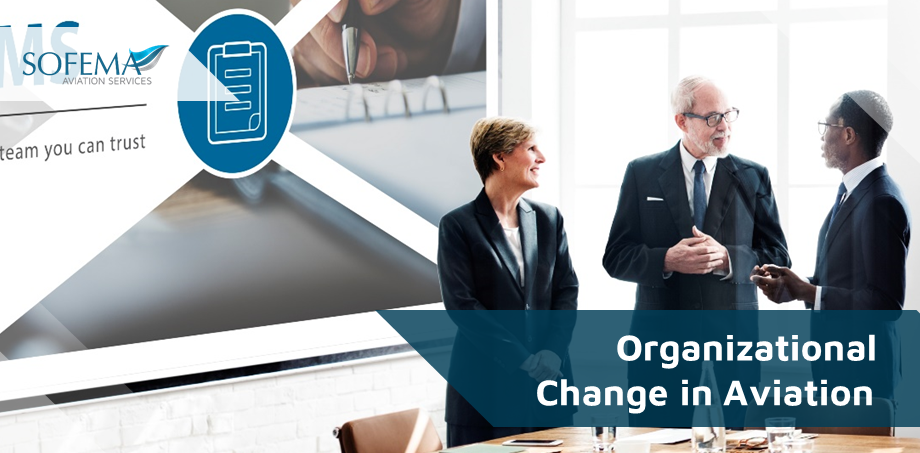Steve Bentley FRAeS CEO of Sofema (www.sassofia.com) considers a number of challenges which will be faced by Aviation over the next decade.
Introduction to Organizational Change
The industry involves many stakeholders, including airlines, airports, air traffic control, and regulatory bodies. Each of these stakeholders has their interests and priorities, and implementing organisational change that benefits all stakeholders can be a complex and difficult process.
The industry has seen significant changes over the past decade, including the emergence of new technologies, increased competition, changing customer preferences, and evolving regulatory frameworks.
Organizational change can include changes in management structures, communication processes, or operational procedures. Organizational change can be difficult and costly, but it is often necessary for the industry to remain competitive and meet the needs of its customers.
The next decade will bring even more challenges, including the need for organizational change to adapt to the changing market dynamics, technological innovations, and customer demands.
Challenges Facing the Aviation Industry in the Next Ten Years
-
Technological Change
o The aviation industry has been at the forefront of technological innovation, including advances in aircraft design, engine technology, and avionics. The next decade will see even more rapid technological change, including the increasing use of artificial intelligence (AI), automation, and data analytics.
o To remain competitive and meet the evolving needs of customers, organizations must invest in new technologies, including AI, automation, and data analytics. (Investing in new technologies can be costly, and organizations must carefully assess the benefits and risks of each technology before making a significant investment.)
o Organizations must ensure that employees have the necessary skills and knowledge to work with the new technologies effectively. Additionally, organizations must ensure that the new workflows are optimized to achieve maximum efficiency, reduce costs, and improve safety and security.
-
Regulatory Framework
o Our industry is highly regulated, with numerous agencies and authorities involved in ensuring safety, security, and environmental compliance.
o The regulatory framework is likely to become even more complex in the next decade, as new technologies emerge, and the industry becomes even more globalized.
NOTE – Organizations will need to stay abreast of regulatory changes, ensure compliance, and develop strategies to manage the impact of new regulations on their operations.
-
Economic Uncertainty
o Being highly sensitive to economic conditions, the next decade is likely to bring its share of uncertainty, examples include:
- Fluctuations in oil prices
- Currency exchange rates
- Economic growth rates.
o Organizations should develop risk management strategies that can mitigate the impact of economic shocks, such as oil price fluctuations, currency exchange rate changes, and geopolitical events.
-
Financial Considerations
o Implementing organizational change in the aviation industry can be costly.
o These costs can be significant and can impact an organization’s bottom line, particularly if the changes are not successful.
o Additionally, there may be hidden costs associated with lost productivity, employee turnover, and other factors that can impact the organization’s finances.
-
Environmental Challenges
o The aviation industry (like many others) is facing growing pressure to reduce its environmental footprint, including carbon emissions, noise pollution, and waste management.
o Organizations will need to invest in new technologies, adopt more sustainable practices, and develop partnerships with government agencies and environmental organizations to address these challenges.
-
Changing Customer Demands
o Customer demands are rapidly evolving, with travellers seeking greater convenience, personalized experiences, and value for money.
- Organizations will need to invest in new technologies, data analytics, and customer service strategies to meet these demands and remain competitive.
- Changes that result in shorter wait times, easier check-in procedures, or more comfortable seating can all contribute to increased customer satisfaction.
Note – Changes can cause delays, reduce productivity, and even result in temporary shutdowns. This disruption can have a negative impact on customer satisfaction, employee morale, and the bottom line.
Meeting the Challenge of Resistance to Change
- Resistance This can come from employees who are comfortable with the current system or from management who are resistant to changing established procedures.
- Employees may also be resistant to change due to concerns about job security, a lack of trust in management, or a fear of the unknown.
- Resistance to change can cause delays in implementation, reduce employee motivation, and even result in project failure. This resistance can also lead to delays, increased costs, and reduced effectiveness
Maintaining Safety Standards
Our industry like all others is under pressure to increase efficiency and reduce costs. Also to consider we have one of the highest safety standards of any industry and any changes that impact safety must be carefully considered.
- Balancing these competing priorities can be challenging, and changes that improve efficiency must not come at the expense of safety.
Considering the Role of AI Related to Aviation Change Management
AI potentially provides solutions for multiple aviation business areas for example:
- AI-powered predictive maintenance to identify potential issues before they become major problems, reducing the number of unscheduled maintenance events and increasing aircraft availability.
AI-powered chatbots to handle customer inquiries, reducing the workload on customer service agents and improving customer satisfaction.
Note – AI can lead to job losses, especially in areas such as customer service and maintenance, where AI can automate many tasks. To help to minimize the negative impact of job losses. It is important to ensure sufficient focus on reskilling and upskilling their workforce to ensure that employees have the necessary skills to work with new technologies.
Next Steps
Follow this link to our Library to find & Download related documents for Free.
Sofema Online introduces a new series of courses focused on the development of Soft Skills in Aviation Leadership and Management Skills Development – see here for details of our Aviation Leadership Diploma
For questions or comments please email team@saassofia.com
Tags:
aviation, Aviation Industry, aviation safety standarts, Change Management, Compliance, customers satisfaction, organizational change, regulatory changes, Regulatory Framework, safety standarts, SAS blogs, Sasssofia, Soft Skills




